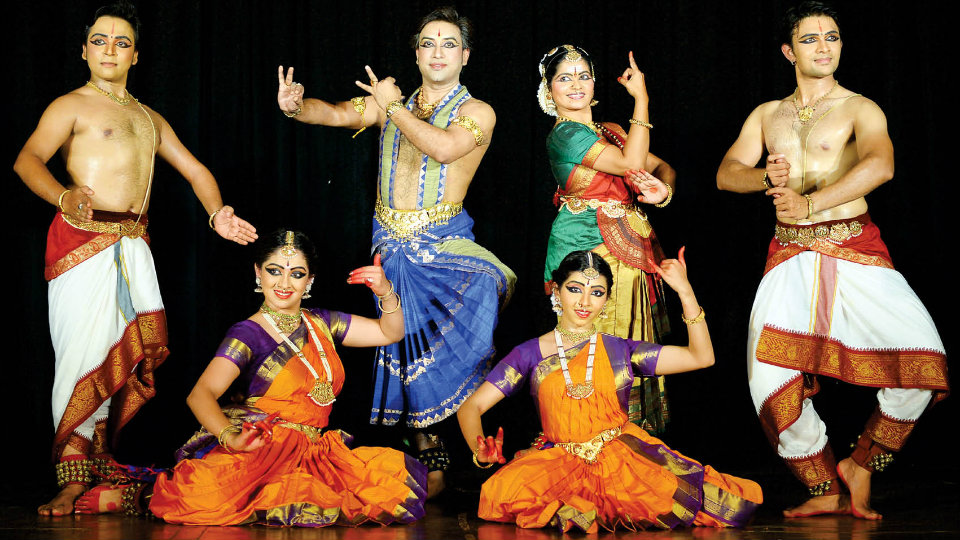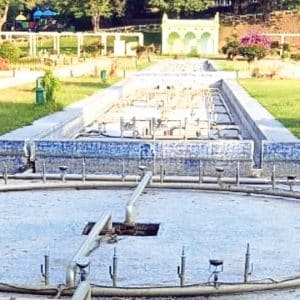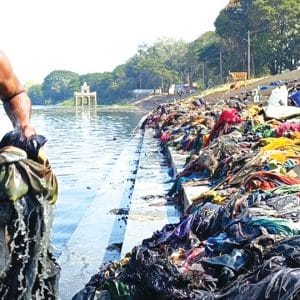Articulate Festival, curated by Mysore B. Nagaraj, saw its 40th edition at Veene Seshanna Bhavana, Kuvempunagar, on Sunday (Sept. 15). This is a every 3rd Sunday of the month venture of the Articulate Trust for Arts — a platform created to showcase artistry of accomplished dancers of Classical dance forms of India.
From the time the festival was launched in June 2016 until the 40th of its series, more than 250 dancers have been given opportunity to perform. This is apart from festivals conducted to present folk traditions of the world and prodigies of classical dance.
Bengaluru-based Sai Arts International’s two male and two female principle dancers, Shwetha Venkatesh, Kshamitha Shastry, Sharath and Nidhaga Karunad commenced the festival’s first segment. This was a quartet composition, choreographed by their Guru Karnataka Kalashree Dr. Suparna Venkatesh. They chose a Tamil composition written by Lalgudi G. Jayaraman, set to Shanmukhapriya Raga, aadi tala “Devar Munivartholin paada jagannathan.” Like many beautiful compositions, this too was predominantly a string of various names of Lord Vishnu, with particular reference to the Lord of the seven hills, Sri Venkateshwara. The choreography was in the format of a Varnam.
Fulfilling the essence and purpose of classical dance to evoke a spiritual bliss, the presented dance hit the nail strong and hard and unfolded various leelas of Lord Vishnu in all the splendour of how a varnam should be constructed as flown down from decades. A Varnam which used to be the longest composition of Bharatanatyam repertoire, started being condensed from around 45 minutes to just 15 to 20 minutes. But Suparna Venkatesh resurrected the Varnam in all its hues and effervescence and presented a nearly 40 minutes item. There was a perfect balance and weight to various technical requirements that these kind of compositions demand.
In the freezes that were moulded into the choreography, gave glimpses of “Dashavatara”, “Vishnu Shesha Shayana” in two different postures, Sreedevi- Bhudevi- Sahitha Garudaroodha Maha Vishnu. Vishnu’s presence and appearances were beautifully described in the Panchabhootas, Abharana Priya, Vishnu as Venkatachala with Kamala Nayana and the Utsava Murthy procession with Vadya Nartana Vrinda. Fleeting story telling in the sancharis for the elaboration of the line “Srinivasa Perumaisollataramu” saw the episodes of Vishnu Marrying Lakshmi, who was born during Samudramathana and the episode of Gajendra Moksha.
While weaving more stories of Vishnu’s leelas in various avatars, one saw in his Vamana Avatara – subjugating Bali, in Mohini Avatara – Amruta distribution to the Devas, in Rama Avatara-Ahalya Moksha and in Krishna Avatara – Draupadi Vastrapaharana. The dance concluded with Geetopadesha. As first group to perform in the festival evening, 40 minutes just fleeted. A lost art of varnam resurrected. The four dancers showed no exhaustion in their performance, maintaining the same energy with which they started off until the final freeze.
Dr. Arkodev Bhattacharya from Kolkata presented three dance items in Bharatanatyam and all were from Rukmini Devi Arundale’s repertoire. Commencing with abhinaya item, an ashtapadi of Sri Jayadeva “Hari riha mugdha Vadhu” and concluding with a Kannada Haridasa Sri Purandara Vittala’s Devaranama “Jagan Mohanane Krishna”, Arkodev sandwiched a Tamil composition on Shiva “Ananda Natana Prakasham” the choreography of which he attributed to Leela Samson. Arkodev’s performance though slow paced, unhurried was yet pleasing.
Deepa Bhat of Bengaluru, who gave the third segment of the festival, gave an enriching experience with her two presentations. One, Vidwan Karthik Hebbar’s composition on Shiva “Eeshane Kailasanathane” in raga Sumanasa Ranjini set to Adi Tala and two, Jayalakshmi Bhat’s krithi “Navarasa Lalithe” whose opening lines are “Naada Nrutya Priye Jagadeeshwari” set in different ragas and in Adi tala. While the first was gilded with nrutta to accentuate the Shiva vigour, the second item went through the Navarasas as enunciated by the shastras.
Here Deepa Bhat expressed the following rasas through the feelings of Parvathy at various junctures. Her Shrungara feeling while she married Sundareshwara, her Veera feeling while vanquishing Mahishasura, her Karuna feeling as Annapoorneshwari, her Hasya on seeing resurrection of Ganesha with Elephant head, Bhaya as she witnessed Shiva consuming the Kalakoota, her Bhibathsa when she lapped up the blood of Raktabeejasura as it dropped to the ground, her Roudra when she saw Ganga in Shiva’s locks, Adbhuta on witnessing creation of Shanmukha and finally her Shantha rasa when she is always in her inner self. An evening truly well spent on a Sunday, with fine weather outside and enchanting dancing on the inside.








Recent Comments